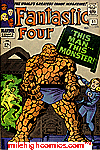Nowhereman said:
Yeah,Dick Dillin thats the guy!
Dillin also died of a heart attack, and I think he was pretty young. He died rather suddenly and unexpectedly in 1980, I think JLA 183 was his last issue, and George Perez began pencilling the book immediately after, concluding the JLA/New Gods crossover story Dillin had begun.
Dillin, to my knowledge, got his start as part of the new talent Neal Adams helped into the field in 1970-1971. Some of his earliest assignments were a short story in HOUSE OF SECRETS 82 (Nov/1969) and SUPERMAN 249 (the origin of Terra-Man, March 1972), both inked by Neal Adams, which I'm sure helped him get published.
I see Dillin's work as similar to Irv Novick's (although Novick had been in comics for at least two decades prior to Dillin), and I love Novick's BATMAN and DETECTIVE stories, Written mostly by O'Neil and Robbins, and mostly inked by Dick Giordano.
Aside from JLA, I remember Dillin fondly for his work on WORLD's FINEST during the 1970's.
Nowhereman said:
Gotta disagree about the comparison to Elvis!
Elvis was a great singer up to when he died (ok so live he was mostly in a drugged up stupor) and to my mind actually released some of his best records!
Kirby didnt deteriorate either,his style stayed the same so to me all his work looked nasty!
There were far superior artists from the 30's onwards who dont get half the credit Kirby does!
To my mind the only reason Kirby has been given the stature he has is due to the fact when Marvel launched in the 60's,he pencilled the bulk of the titles giving him an iconic status far beyond his actual talent!
Kirby's cleanest and most realistic art was during the 1964-1970 period. Especially 1965-1966, on JOURNEY/THOR 116-140, and FF 41-60.
But even in the periods before and after, I think Kirby is a masterful storyteller. His visual narrative is very clear, and although less detailed than some artists, he knows how to tell a story with clarity, better than some artists who may be technically better and more detailed.
Kirby's influence stems from many other artists adapting and using the storytelling conventions Kirby created.
I certainly have great respect for many other artists in comics who preceded him or were his contemporaries in the 1940's and 1950's, such as Hal Foster, Alex Raymond, Will Eisner, Bob Kane, Joe Shuster, Jerry Siegel, Lou Fine, Mac Raboy, Jack Cole, Matt Baker, L.B. Cole, Frank Frazetta, Wallace Wood, Al Williamson, Steve Ditko, Joe Kubert and Carmine Infantino.
All giants in the field.
And if I were to pick another grandmaster of the field
other than Kirby to devote a topic to, for their influence as well as their work, it could easily be Carmine Infantino, Neal Adams, Will Eisner, or Joe Kubert.
Or from the more current era, Jim Steranko, Michael Kaluta, Barry Windsor-Smith, Berni Wrightson, Richard Corben, Jim Starlin, Paul Gulacy, Arthur Suydam, Charles Vess, Tim Conrad, Scott Hampton, John Muth, Craig Russell, Michael Golden, Marshall Rogers, Paul Smith, John Bolton, Walt Simonson, Mike Grell, Frank Brunner, George Perez, Adam Hughes, Frank Cho, Stuart Immomen, Mike McKone, Carlos Pacheco, Jose Ladronn, Mike Mignola and many others.
Although all the names after Corben I listed are, despite having produced great work, not really influential on other artists like those I listed
before Corben.
But regardless, I greatly enjoy their work and their various levels of influence on the field, and it's certainly no slap in their faces that I'm praising Kirby here.
But I do think Kirby deserves credit for his massive contribution, in terms of characters he created, influence of his art style, and just the sheer volume of his output, and tenacity in a field that often screwed him. He worked hard, produced many memorable stories, and certainly earned the love and loyalty of his fans, and fellow professionals.
I'm very grateful for the many hours of great reading his work has given me. And
continues to give me.
--------------------
 "This Man, This Wonder Boy..."
"This Man, This Wonder Boy..."